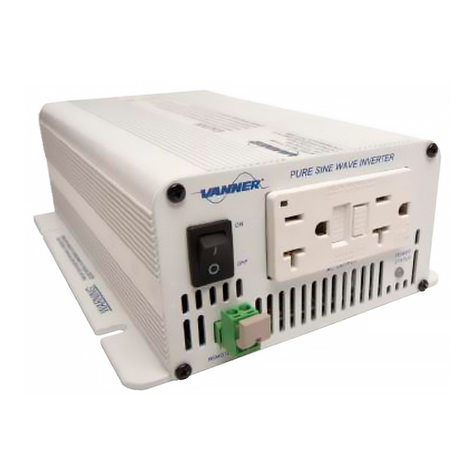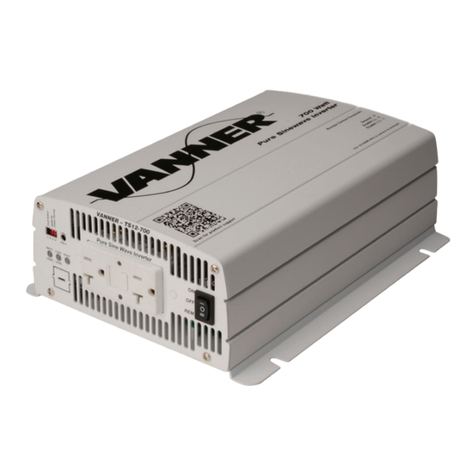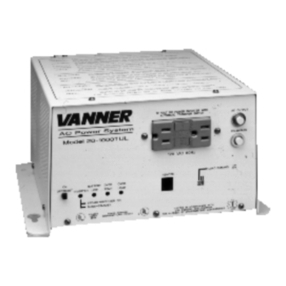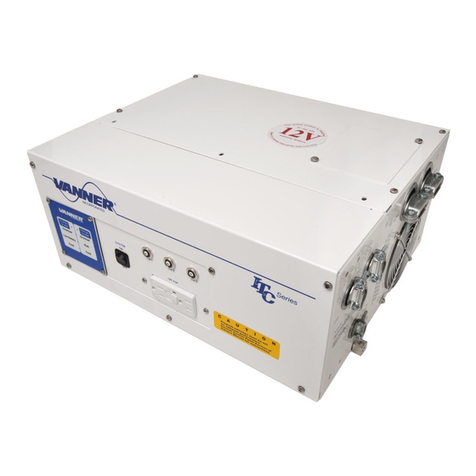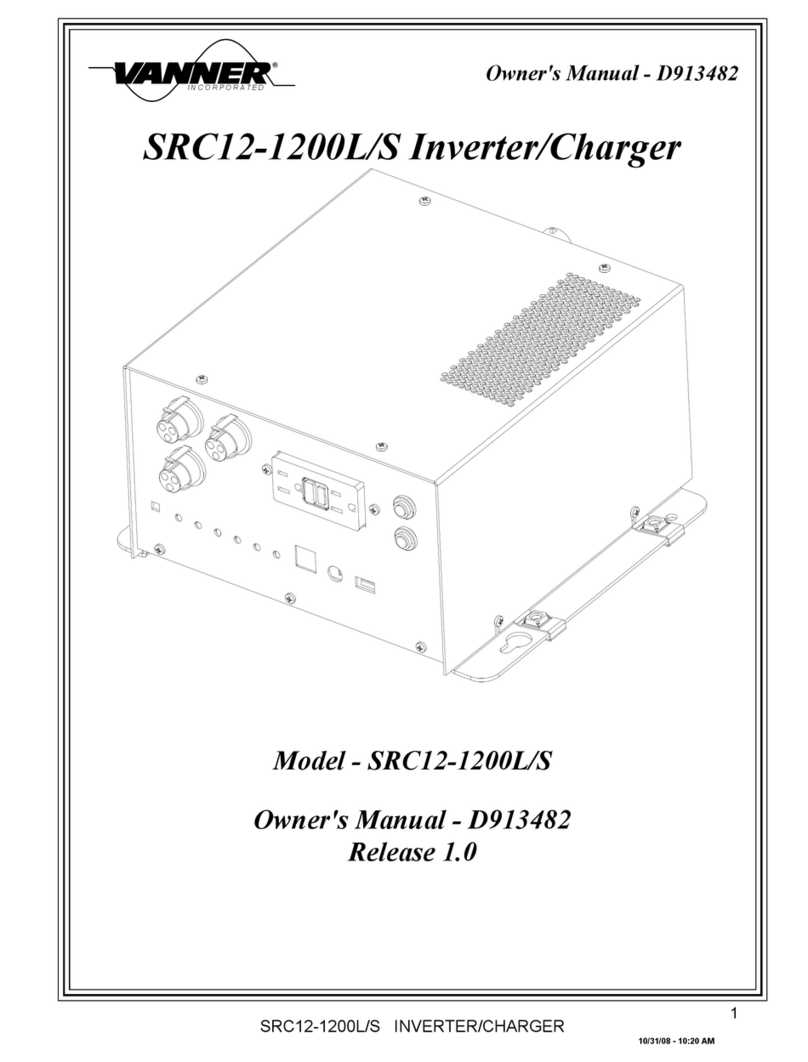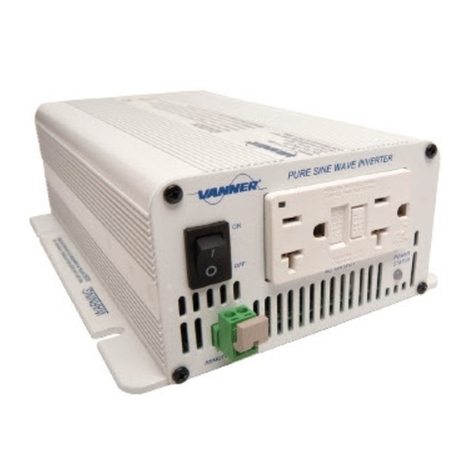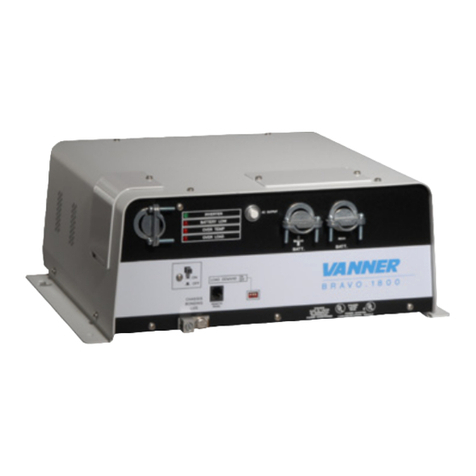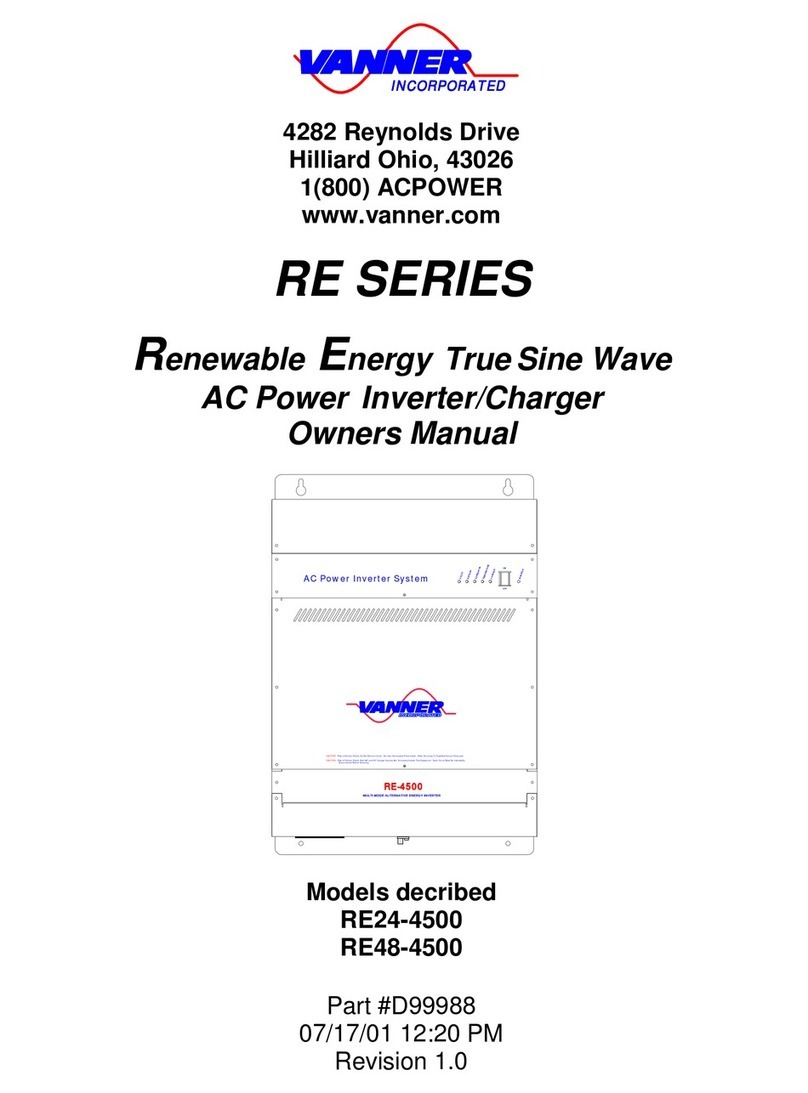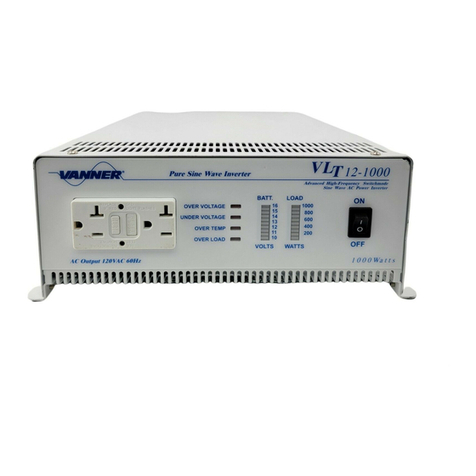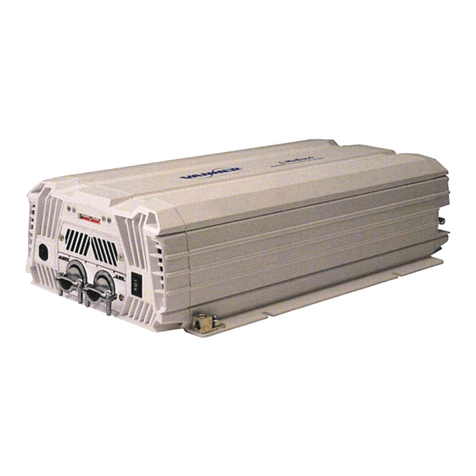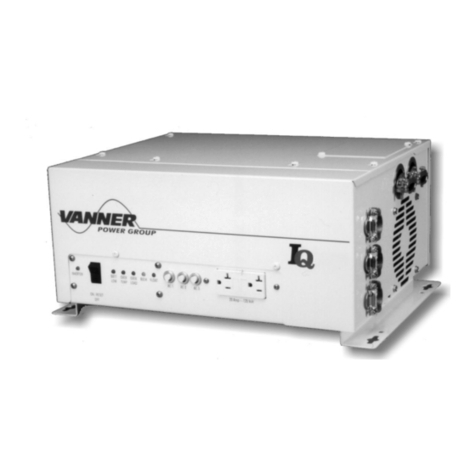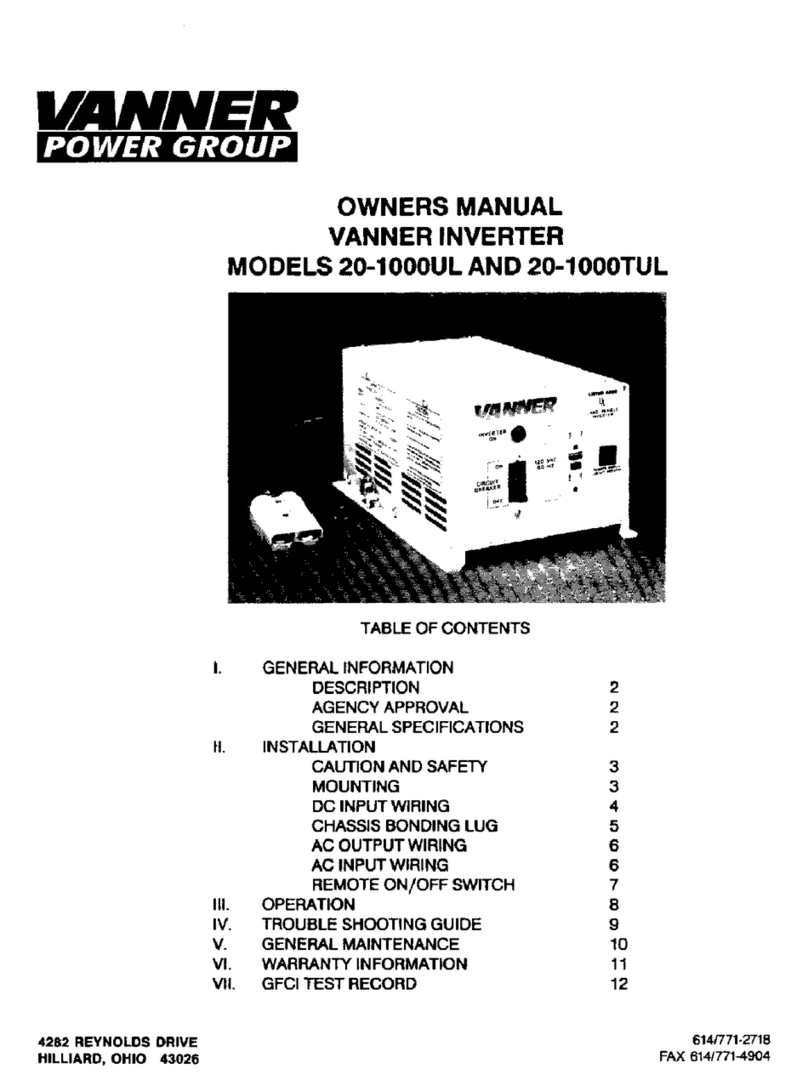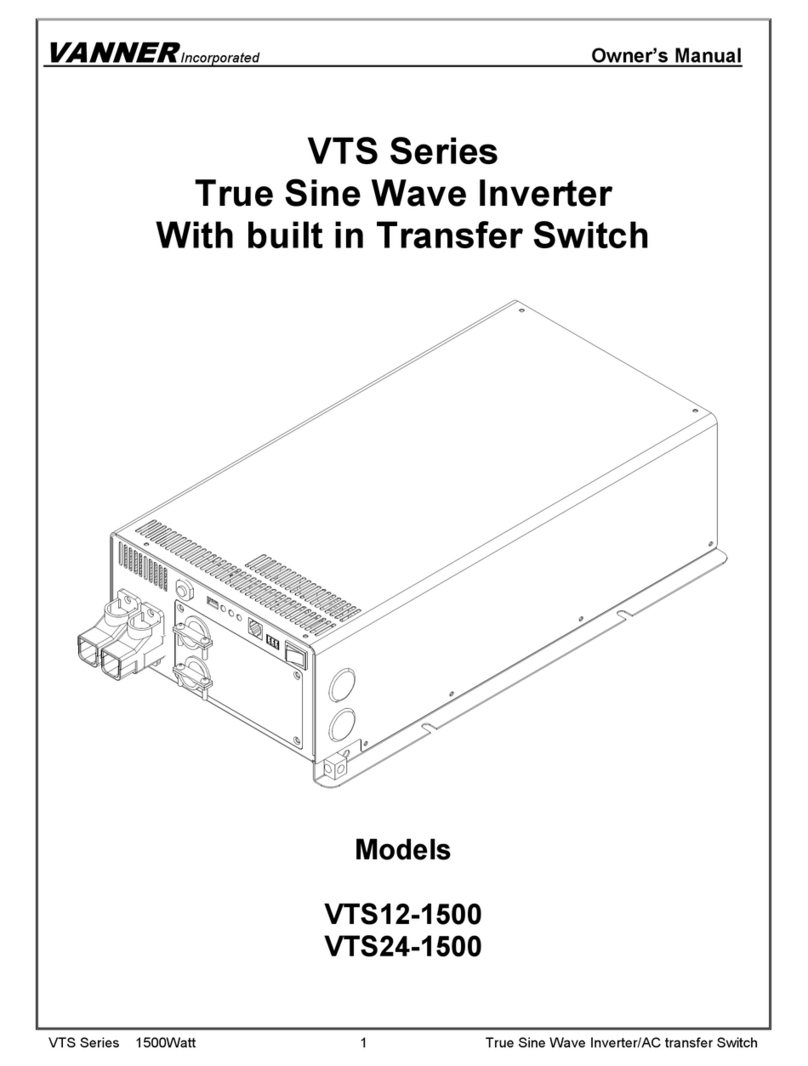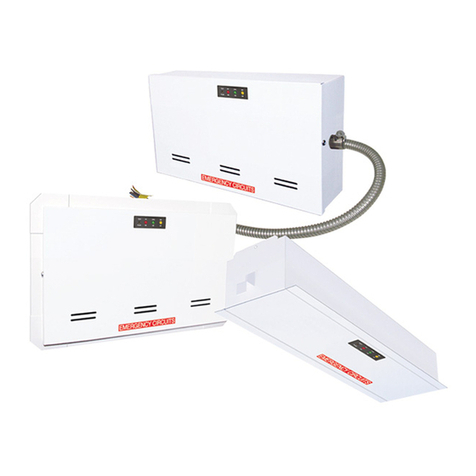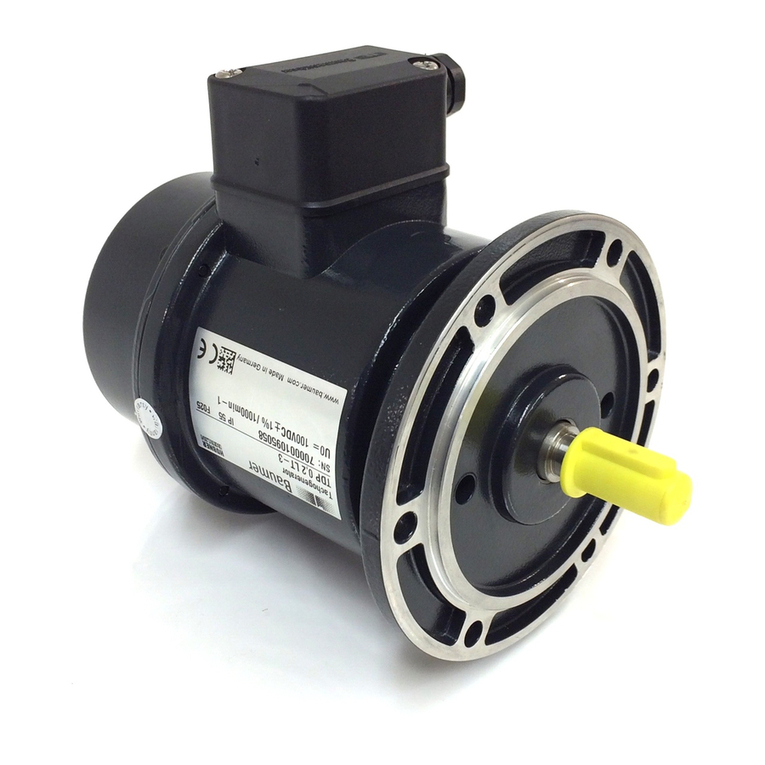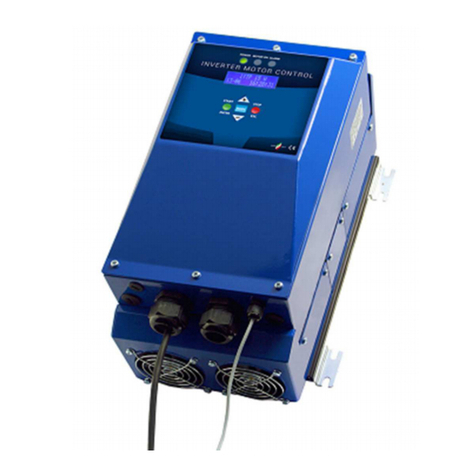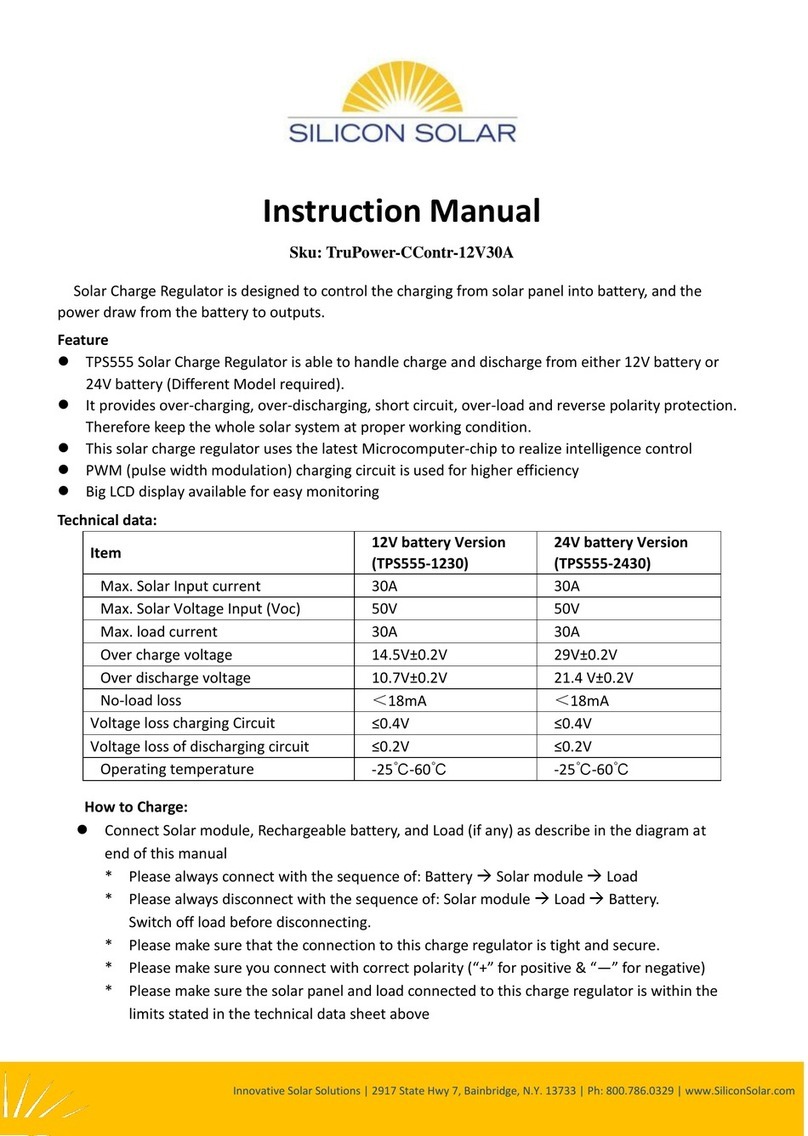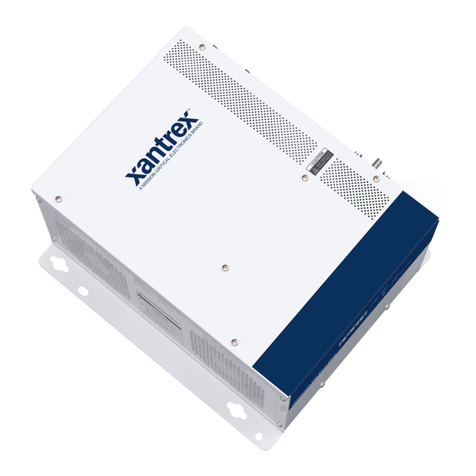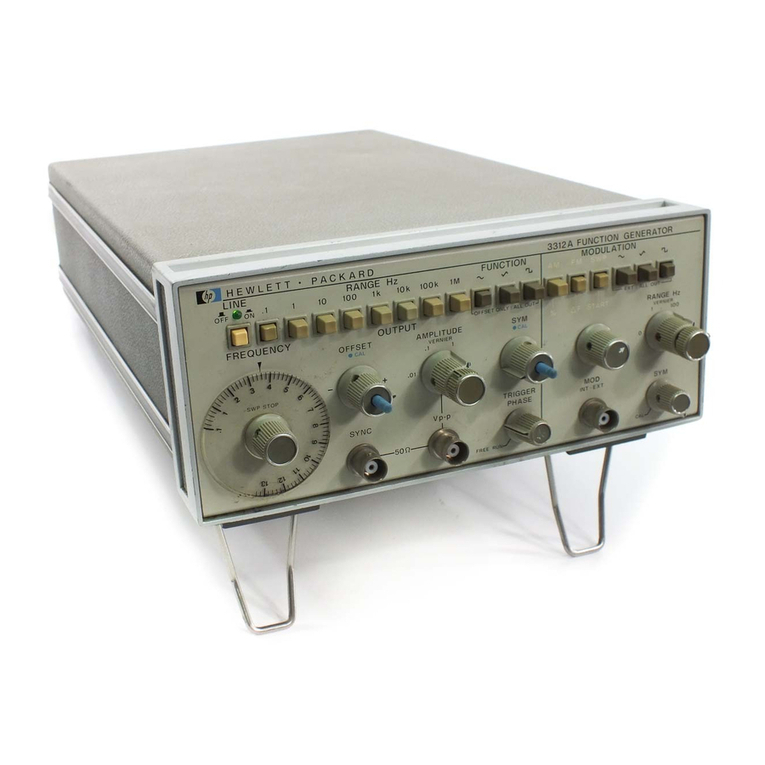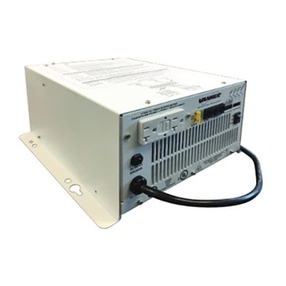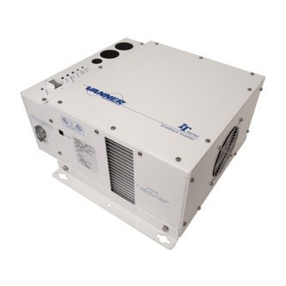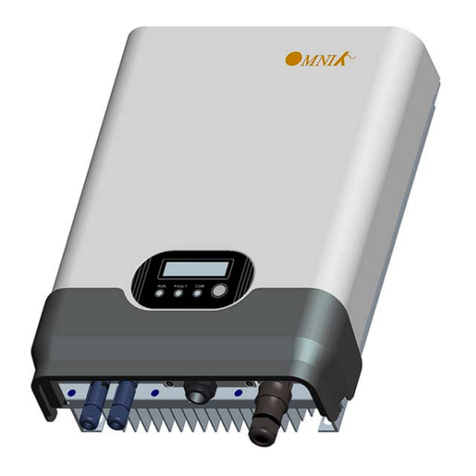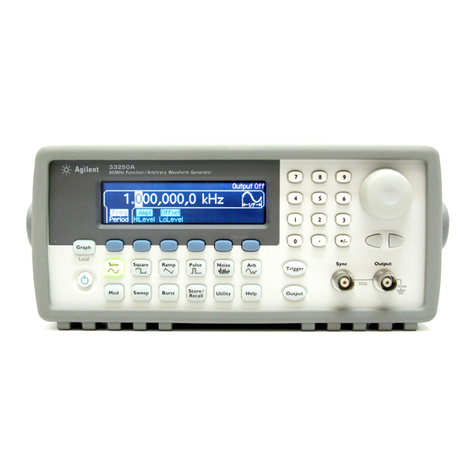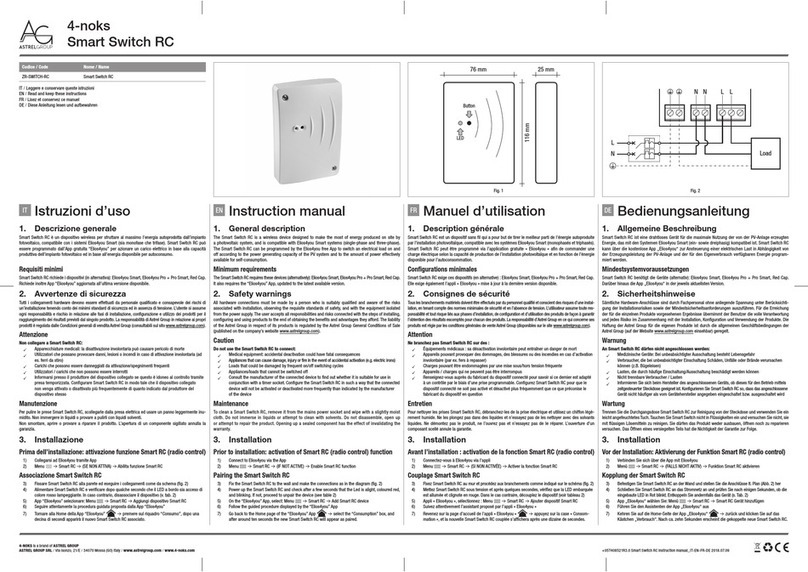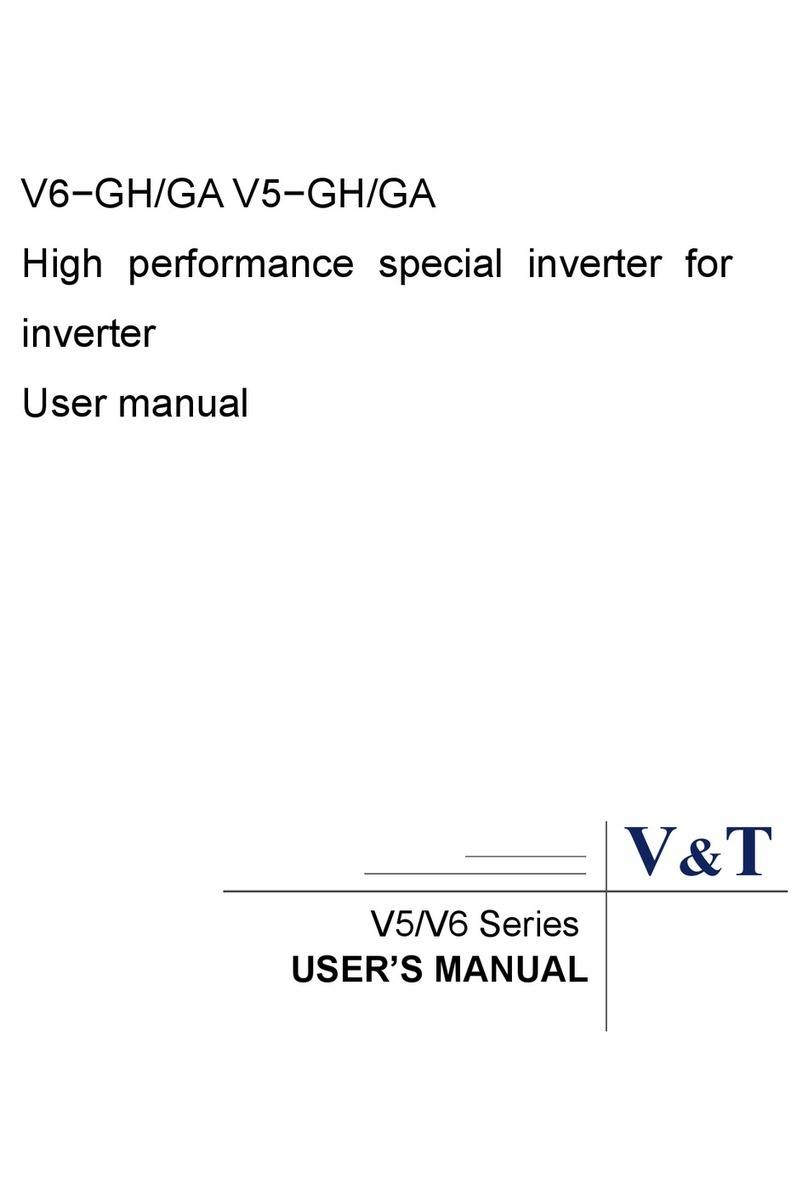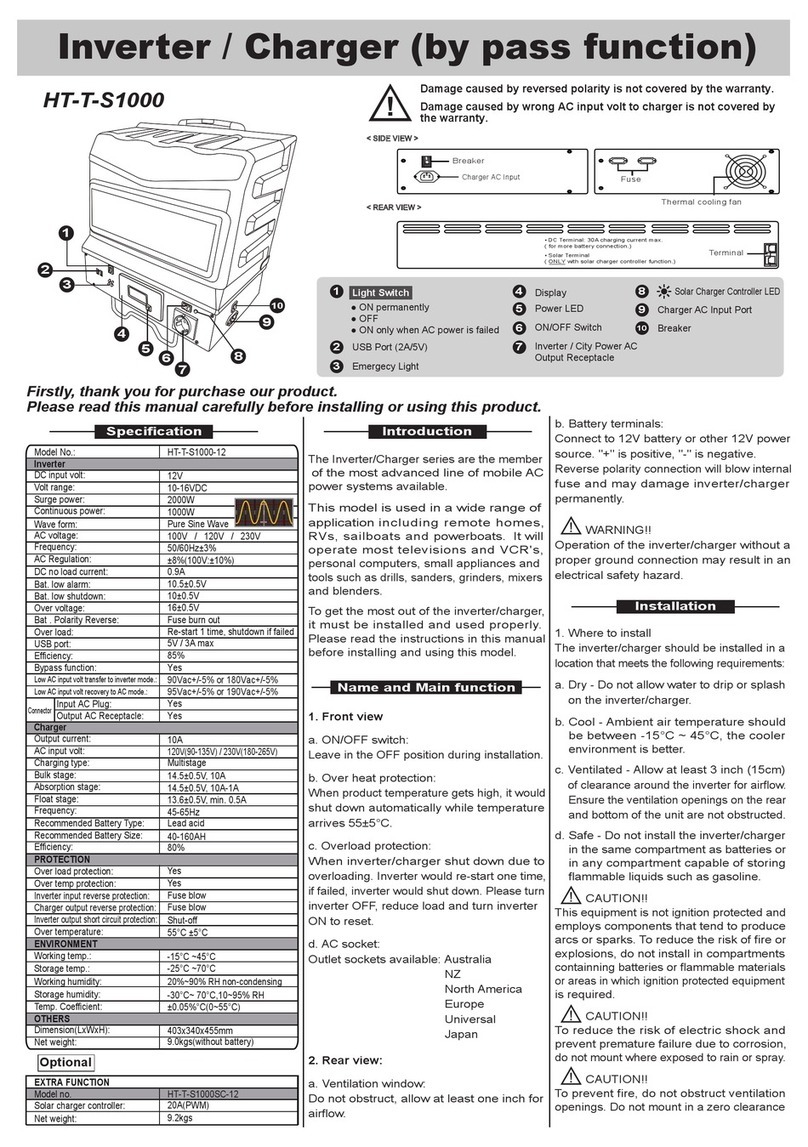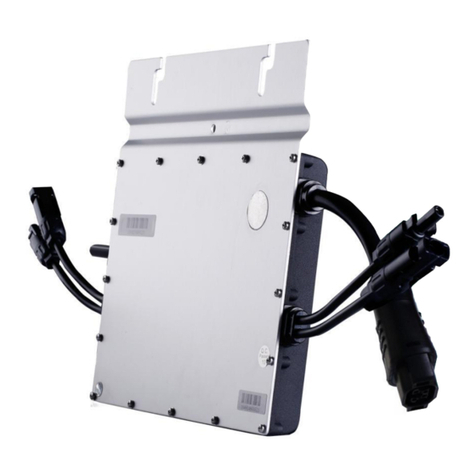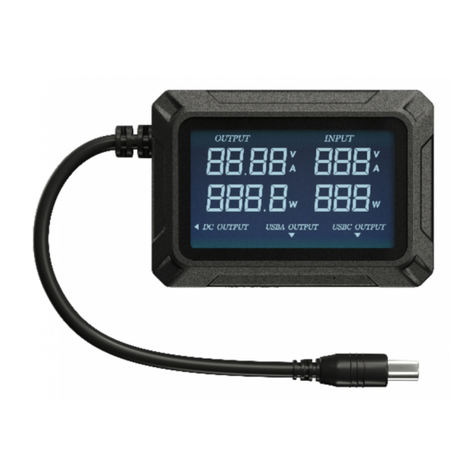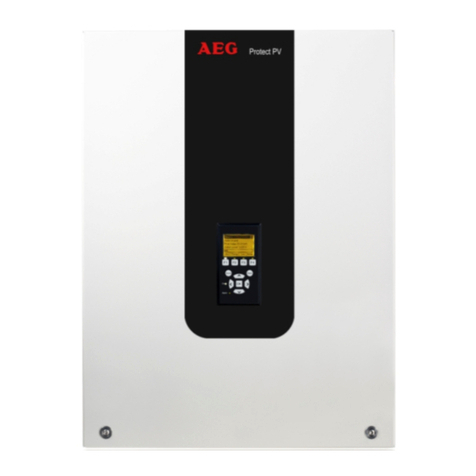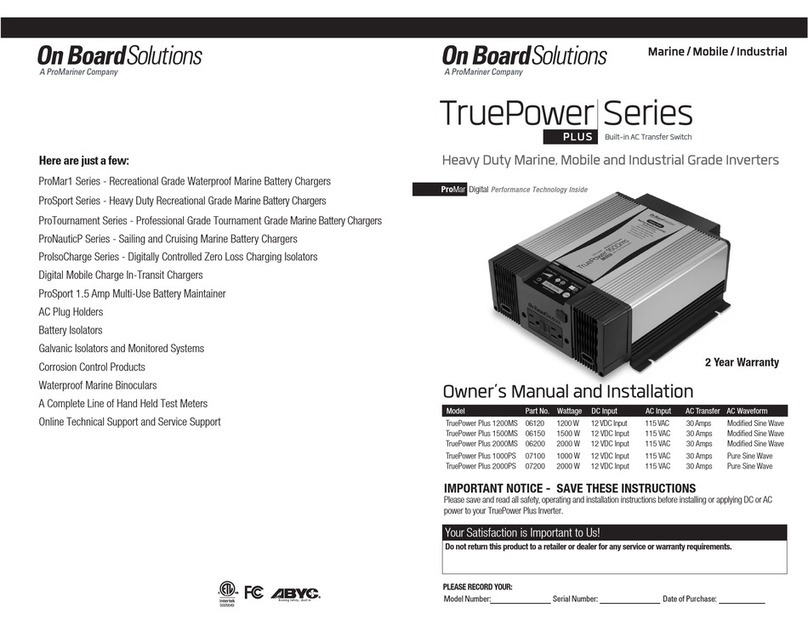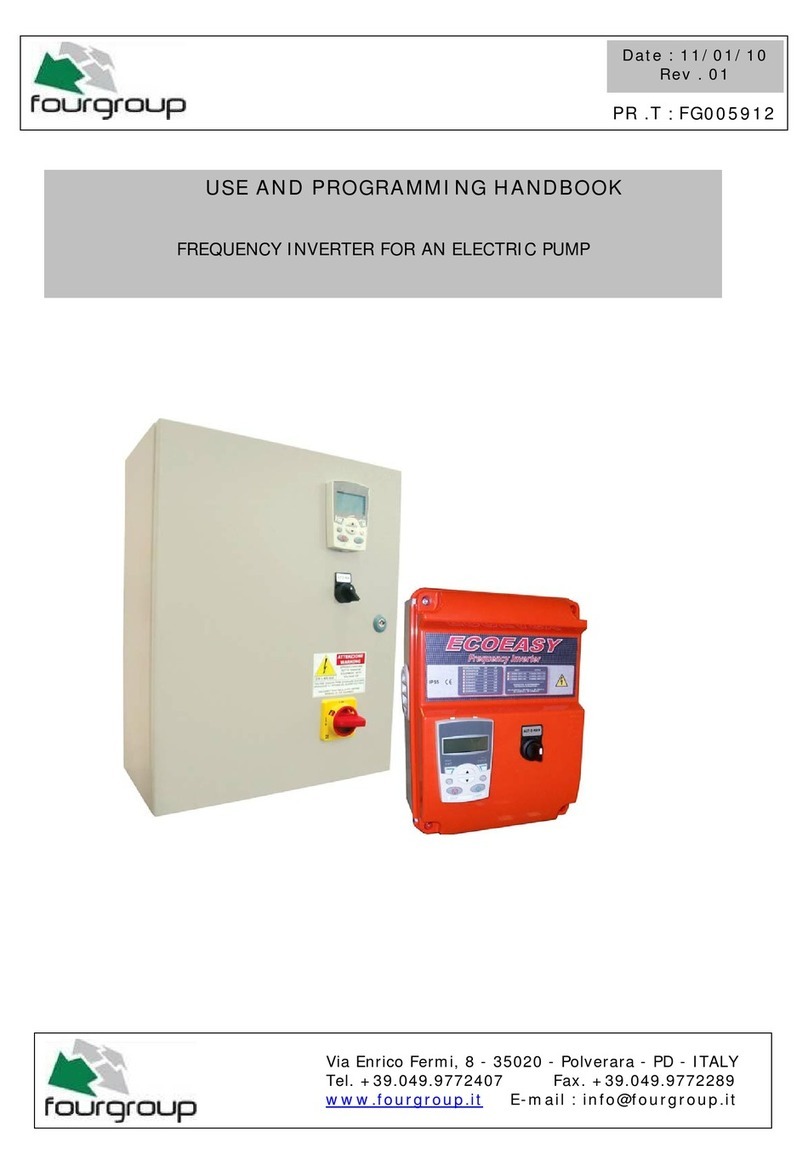
V AN NE R I N COR POR A TE D Bravo1800–Owner’s Manual
System On/Off Switch
The On/Off Switch allows you to control the operation of the inverter and battery
charger. Please note that this switch does not disconnect power from the inverter
system. It sends a signal to the system's electronics to control the inverter.
Note—The ON/OFFswitchonly controls theinverter portion ofthesystem. On
Inverter/Charger systemthe battery chargerportionofthesystemisalwayson when AC
inputpoweritpresent.
In the On position, with shore/utility power present, the battery charger will
automatically charge and/or maintain the charge on your battery while passing the
shore/utility power through the AC transfer switch to power the AC loads
connected to the system. When shore/utility power is removed the AC transfer switch
quickly connects the AC loads to the inverter, which will obtain its power from the
battery to power the loads.
WARNING
To ensure complete
isolation from
external power use a
remote disconnect
switch in the DC and
AC input circuits
Programming Switch
The Programming Switch is a dip type switch containing three individual slide switches.By placingtheswitch in the
upper or lower position you selectthe desired function. Note: On inverter-only models (models without battery charger)
only the Load Demand switch isused.
Programming Switch Positions:
Batt. Type: Lower position = Flooded (wet) lead acid battery type.
Upper position = Gel lead acid battery type.
Load Demand: Lower position = Load Demand disabled/Off.
Upper position = Load Demand Enabled/Automatic.
ChargerOutput: Lower position = High output (80 amp on 12 Vdc models or 40amps on 24 Vdc models).
Upper position = Low output (40 amps on 12 Vdc models and 20 amps on 24 Vdc models).
Load Demand
The inverter also has an energy-saving feature called load demand." With this feature, the inverteroutput ispulsed,
significantly reducing the currentdraw from the battery untila demand ismade
on
itsoutput.Continuousoutputof 120
VAC resumes when an AC load greater than 5 watts is applied. Load demand can be disabled with the Setup switch on
the front panel.
Protective Interlocks
Battery Low:
Over Temperature:
Over Load:
The inverter continually monitors the DC input voltage to ensure that the battery
contains sufficient charge to supply power to the inverter. In the event that the
battery voltage drops to 10.5 (21) volts, an indication of a low charge inthe battery,
the inverter will shut off, and the Low Battery indicator willblink. TheLowBattery
indicator will illuminate steady when the battery voltage drops near the shut-off
voltage to provide an "early warning"priorto shuttingdown.
The inverter will shut off if internal temperaturesensors detectahigh temperature
conditionthatwoulddamage theinverter.
If a short circuit or a very large load is applied to the inverter's outputthe
inverter will shut down and the Over Load indicator will illuminate.
